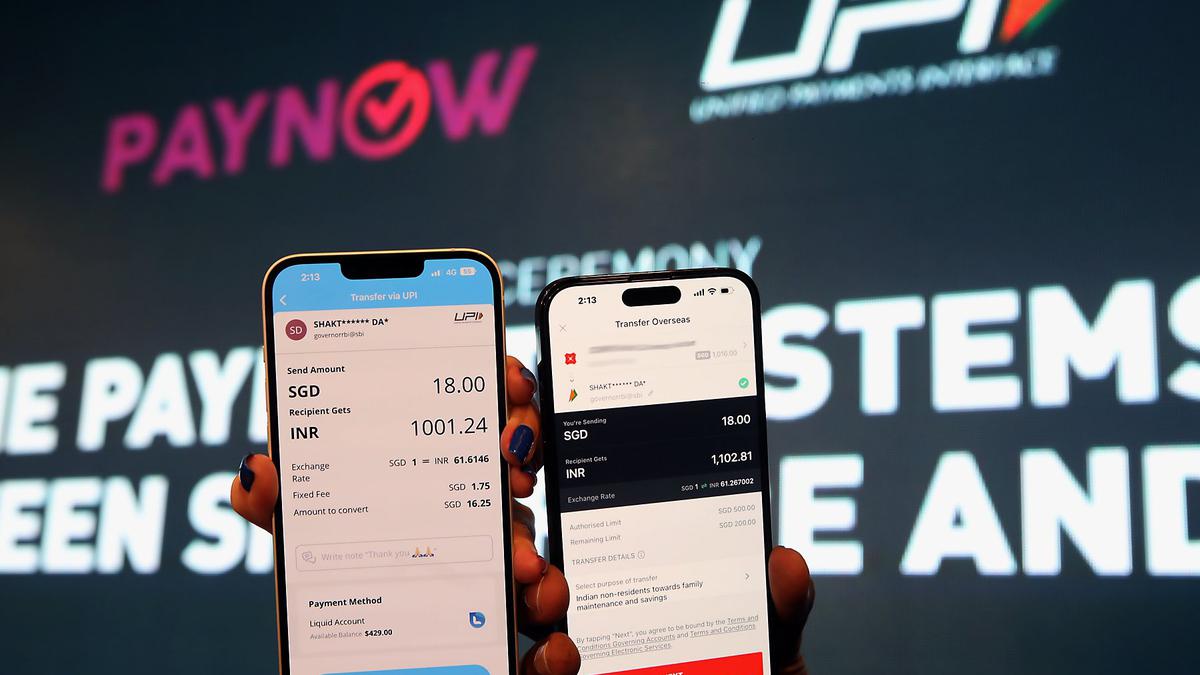Play all audios:
THE STORY SO FAR: On February 21, India’s Unified Payments Interface (UPI) and Singapore’s PayNow were officially connected to allow for “real-time payment linkage”. Singapore is the first
country with which cross-border Person to Person (P2P) payment facilities have been launched. The plan was first announced by the Reserve Bank of India (RBI) and the Monetary Authority of
Singapore (MAS) in September 2021 to facilitate instant low-cost, cross-border fund transfer. HOW WILL IT HELP? When the scheme was announced, the RBI had said that the cross-border
interoperability of payments using cards and QR codes between India and Singapore would further anchor trade, travel, and remittance flows between the two countries. The initiative is a part
of the government’s push towards a UPI-based payment ecosystem. In January 2023, the National Payments Corporation of India (NPCI) enabled international phone numbers to be able to transact
using UPI. The Union Cabinet had approved incentivisation schemes for promoting low-value BHIM-UPI transactions in April 2022. ALSO READ | SAFE ACROSS BORDERS: ON UNIFIED PAYMENTS
INTERFACE-PAYNOW LINK On February 21, Prime Minister Narendra Modi and his counterpart, Singapore Prime Minister Lee Hsien Loong, attended the virtual launch. The Ministry of External
Affairs said this would help the Indian diaspora in Singapore, especially migrant workers, and students, and “bring the benefits of digitalisation and fintech to the common man through the
instantaneous and low-cost transfer of money from Singapore to India and vice-versa.” HOW WILL THE SCHEME WORK? Data | India’s shift from cheques to online money transfers faster than
Singapore, US and Canada For users at the Indian end, State Bank of India, Indian Overseas Bank, Indian Bank and ICICI Bank will facilitate both inward and outward remittances, while Axis
Bank and DBS India will only facilitate inward remittances for now. DBS-Singapore and Liquid Group, a fintech company, will facilitate the service for users in Singapore. More banks will be
included in the linkage with time, the RBI said in a press release. Account holders of listed banks can transfer funds to/from India using their UPI ID, mobile number, or Virtual Payment
Address (VPA). To begin with, Indian users can remit up to ₹60,000 per day. This is equal to around $ (Singapore) 1,000. Cross-border remittances to Singapore can be done through the bank’s
mobile application or internet banking facilities. Apps of participating Indian banks will have an opt in/opt out feature for receiving remittances from Singapore. Currently, only UPI IDs
registered with the same bank where an account is held can be used to receive remittances in accounts of participating banks. The P2P remittances between India and Singapore are only allowed
for purposes of “maintenance of relatives abroad” and “gifts”. According to the RBI, participating banks will roll out updates to allow global remittances in their UPI apps in a phased
manner. India has also considered allowing UPI remittances from other countries like the United Arab Emirates (UAE) which hosts a large Indian population. In November 2022, India and UAE
discussed allowing cross-border remittances through UPI platforms during a meeting between External Affairs Minister S. Jaishankar and UAE Foreign Minister Sheikh Abdullah bin Zayed Al
Nahyan in New Delhi. NRIs from 10 countries can use UPI with their international mobile numbers WHAT ARE REAL-TIME PAYMENTS (RTP)? As the name suggests, real-time payments are money
transfers that are mostly settled as soon as they are performed. RTPs are allowed 24x7, 365 days a year. They help simplify the process of fund transfer as well as ease communication between
the payer and the payee. P2P payments involve the transfer of funds from one user’s bank account to another through a digital medium. Common examples of P2P mobile apps in India include
GPay and Paytm. Using P2P payments eliminates the risk of sharing bank account details. In 2022, UPI payments worth ₹8,31,993.11 crore were recorded in January. This figure climbed to
₹12,81,970.86 crore in December. Published - February 26, 2023 01:04 am IST Read Comments Remove SEE ALL PRINT RELATED TOPICS banking / The Hindu Explains / India / Singapore

